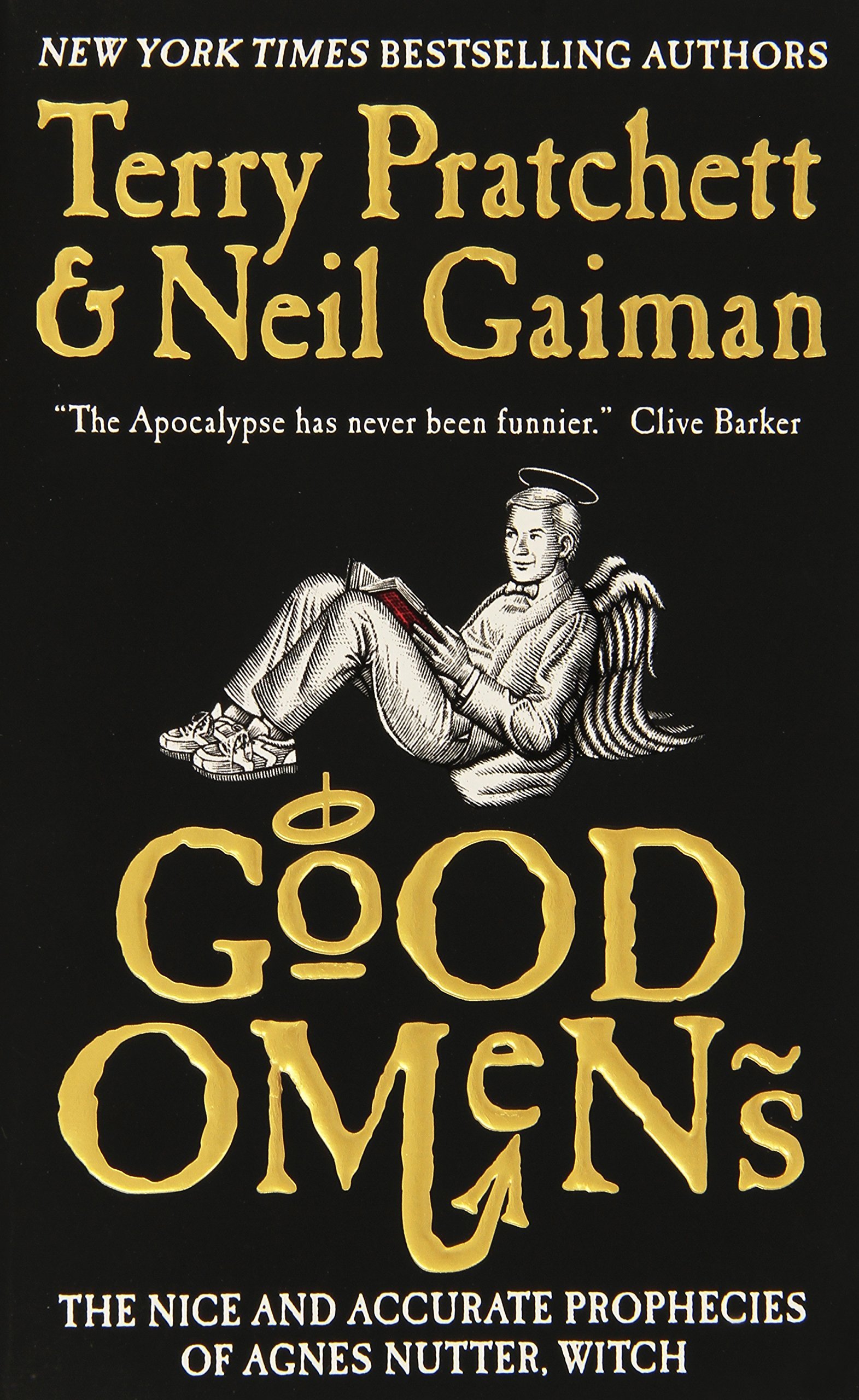In order to complete my challenge for 2015, I needed to read 4 books each month October - December. I managed two last month. Let's see if I can get through ten more books in the next two months!
Good Omens by Terry Pratchett & Neil Gaiman (A book set in a different country)
Well, it was set in England.
This was our book club book for this month. I've never read anything by Terry Pratchett, but now I know that needs to change in the future. And same with Neil Gaiman. I LOVED the British humor (humour), and I loved the irreverent tone of the novel.
A fallen angel-turned-demon (the serpent in the Garden of Eden) and an angel (one of the guardians of Eden welding a flaming sword) conspire several thousand years later to botch Armageddon. They rather like Earth and would rather not see it destroyed in a cosmic battle between good and evil. The only problem is, well, they are utterly incompetent. The race to stop the anti-Christ (a precocious blond eleven year old) begins.
I think this book might well have been offensive to me in days gone by, but I was thoroughly able to enjoy it now. I do wonder, however, how the rest of the book club will take it. It's pretty sacrilegious! But funny. Damned funny.
"Why Are All the Black Kids Sitting Together in the Cafeteria?": And Other Conversations About Race by Beverly Daniel Tatum (A book with a color in the title)
I planned to read The Color Purple to satisfy this requirement, but I really wanted to read this and realized with the word "black" in it, it could check off a box too. Win-win. I came across this book in the book store while perusing the African-American Studies section - a tiny, one shelf section of Barnes & Noble, which shares its already incredibly limited space with LGBT Studies. Poor show, Barnes & Noble, poor show. On both counts.
The title grabbed my attention. It's a question I as a white person have always wondered. It sure did seem like the black kids were always sitting together in high school (not that our school had any black kids, but I noticed it at Forensics tournaments around the state). Isn't that just proof that black people are as racist as white people? I wondered, in my teenage naivete.
 Even as an adult, though, I've wondered if we're all trying so hard to be inclusive, why do we still segregate socially? So the book was added to my armload of purchases, and I started it as soon as I got home.
Even as an adult, though, I've wondered if we're all trying so hard to be inclusive, why do we still segregate socially? So the book was added to my armload of purchases, and I started it as soon as I got home.This book is a must-read for anyone who is aiming to become more racially conscious. Though some of it was stuff I already knew - sort of - most of it was extremely eye-opening for me. I knew I receive the benefits of white privilege whether I mean to or not, but I didn't realize to what extent until reading this book. I also knew that institutional racism is a serious issue, but this book highlighted to me how deeply it runs in American society. I knew that other races experience racism, not just African-Americans (and Latinos), but I never realized to what extent and how easily overlooked racism against other groups is, such as Asians and Native Americans.
Talking about race as a white person is hard, because we aren't used to doing it. We may not be actively "racist" but how often do we keep silent out of fear of saying the wrong thing or upsetting certain people? Keeping quiet about an issue that is literally costing black lives is contributing to the problem. I'm still no expert on what I can do as a white person to combat institutional racism, but this book has made a lot of things more clear to me and has given me a deeper understanding of how deeply ingrained racism is in our society. There is no quick fix for the problem, but this book answers a lot of questions, describes the process of developing one's identity (for all people but particularly people of color), and presents suggestions for how we can all be the change we want to see in the world. For me personally, it inspired new ways to discuss racism with my children. It's not enough to teach them to be "color blind" (an impossibility and a logical fallacy); we have teach our kids to be activists, to teach them what racism does to people and to show them real-life examples of racism destroying lives (Tamir Rice, Trayvon Martin, the list goes on far, far too long), so they will grow up to be a generation that actively pushes racism another few steps back towards the history books and away from the day-to-day experience of far too many of our fellow human beings.
This book has also inspired me to read more black authors and introduce more black historical figures to my kids (and myself) besides just the famous ones they'll learn about in school. Those figures are important, certainly, but until now, I've never noticed how whitewashed history is. We know of only a handful of black historical figures, and the rest are white. This does a huge disservice to us all. It's my mission now to seek out the less well known non-white authors, activists, and historical figures to better educate myself and my kids. (Any suggestions would be welcome!)
To see what else I have read this year:
September
July/August
June
May
April
March
February
January


No comments:
Post a Comment
Leave your comments here.